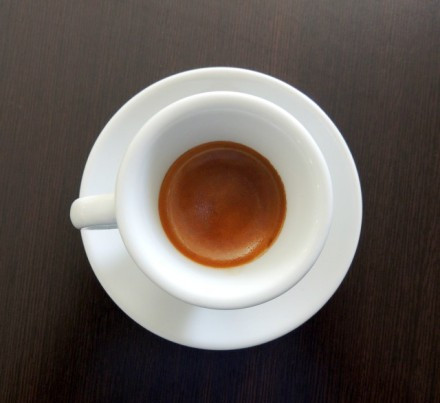How does Italian coffee come out crema? What is CREMA for espresso?
In the process of roasting coffee beans, a large amount of carbon dioxide is produced in the coffee beans, most of which will be released during cooling, and a few will continue to be preserved inside the beans, and these gases will be released when the coffee powder is ground, therefore, the ground coffee powder needs to make coffee as soon as possible.

When hot water hits coffee powder under high pressure, it emulsifies the insoluble oil in coffee powder and saturates a large amount of carbon dioxide, which is much larger than the solubility of hot water under normal pressure. this is why countless small foams appear immediately when the liquid flows out of the handle. But this does not fully explain "Crema, what is the principle of this?" In order to produce stable bubbles, some bubbles and some compounds are needed to "wrap" the bubbles, making the bubble structure stable and elastic. The process of this chemical reaction can be thought of as the role of a surfactant. Unlike milk bubbles, which do this through protein, coffee uses a substance called protein melanin. It is produced by a chemical reaction of a group of mixtures during the baking process, and neither protein nor melanin is hydrophilic, so when hot water strikes, they are naturally distributed on the surface of the bubbles, allowing them to come into more contact with the air. as a result, countless small bubbles are created, and then there are bubbles. There are other things: grease, the existence of grease is disadvantageous, grease often destroys the structure of foam and leads to failure. So will the oil in the coffee cause crema to disappear quickly in a few minutes? The answer is both right and wrong. The surfactant is dissolved in water, and due to the action of gravity, the surfactant of the bubble surface will be pulled off the surface of the foam together with the water, making the foam fragile, robbing elasticity, and then quickly disappearing. The speed at which the foam disappears is related to the speed at which the water is dragged away, but the foam on the surface of a cup of coffee lasts much longer than the foam on the surface of a cup of coffee, because the liquid is much thicker than it is quickly flushed. This is also confirmed by our taste.
The color of crema should be light reddish brown, but what does yellow-white or very black almost charred brown mean? Because crema is actually carbon dioxide bubbles wrapped in brewed coffee, the darker the foam means the stronger the coffee becomes a natural assumption. But it is actually very difficult to distinguish the color of coffee. It is also affected by another important factor: the reflection of light from the foam means that the color of the coffee is much lighter than it actually is through the foam. And the smaller the bubble, the greater the impact, so even if the espresso itself is very dark, it may look very light. A 15-second espresso usually has a whiter crema because it is lighter. Coffee powder is quenched by water for a relatively short time, and the viscosity of coffee is lower than that washed out in 25 seconds. For the same reason, coffee made from a lower water temperature will be lighter because it does not have enough energy to dissolve the substance in the coffee.
Important Notice :
前街咖啡 FrontStreet Coffee has moved to new addredd:
FrontStreet Coffee Address: 315,Donghua East Road,GuangZhou
Tel:020 38364473
- Prev

Crema Analysis of Italian Coffee Machine Oil how Italian Coffee comes out of Kramer
Crema (grease) I don't understand why we make Crema so much more complicated than itself. Crema is often seriously misdescribed, the most common of which is an emulsified oil. Well, I think it's fair to say that to a very small extent. As far as we know, the amount of oil obtained by Espresso in the extraction process is unique. In the process of Espresso extraction, the content of steam
- Next

Is drinking coffee healthy? How to drink coffee is healthy?
Nowadays, most people like to make a cup of coffee when they are tired of work and study, but when drinking coffee, have you ever thought about how to drink coffee to be healthy? 1. The benefits of drinking coffee in the morning can stimulate the central nervous system of the brain, boost your spirits and improve your attention, especially when you don't get enough sleep or catch a cold. Coffee can help the brain stay alert and concentrate on it.
Related
- Beginners will see the "Coffee pull flower" guide!
- What is the difference between ice blog purified milk and ordinary milk coffee?
- Why is the Philippines the largest producer of crops in Liberia?
- For coffee extraction, should the fine powder be retained?
- How does extracted espresso fill pressed powder? How much strength does it take to press the powder?
- How to make jasmine cold extract coffee? Is the jasmine + latte good?
- Will this little toy really make the coffee taste better? How does Lily Drip affect coffee extraction?
- Will the action of slapping the filter cup also affect coffee extraction?
- What's the difference between powder-to-water ratio and powder-to-liquid ratio?
- What is the Ethiopian local species? What does it have to do with Heirloom native species?

